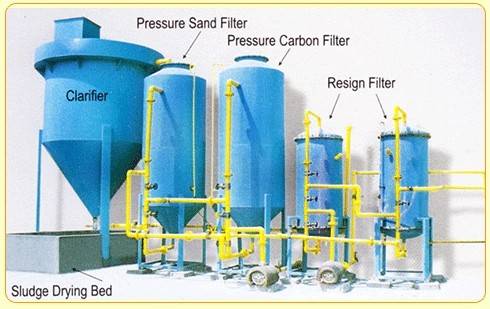The treatment, recovery and disposal of wastewater is an issue for a diverse range of industries from automotive, aerospace and food and beverage, to pharmaceutical, bio-technology, micro-electronics and many, many others. The need to comply with rigorous standards, as well as try to maximise both economic and environmental sustainability, means many (if not most) companies call upon the expertise and guidance of a specialist company or consultant to create and implement the solutions based on both economic and operational requirements.
Understanding Industrial Effluent Treatment
It is useful to have a basic understanding of what kind of plant and systems are used in industrial effluent treatment. Armed with this information, you can ensure that you’re able to provide the correct information a water treatment consultancy needs in order to tailor a system to your specific needs.
Because of the diversity of industries that use water as part of their operations or manufacturing, there are various technologies that might be used to achieve the very best results.
Vacuum evaporation: This is a process in which liquid is caused to evaporate at a lower than normal temperature. It is achieved by separating effluent into two separate flows under pressure: one is the concentrated waste, the other the high quality water (which can be re-used). It is clean, compact and very efficient.
Membrane filtration: This physical separation process uses a semi-permeable membrane as a barrier in order to separate larger (solids) and smaller particles in a liquid, resulting in pure, high quality water. It is a highly effective method of industrial effluent treatment that affords the ability to bring down production costs considerably.
Chemical treatments: In this process chemicals are added to wastewater in order to force contaminants to separate from the liquid, which can then be filtered out. There are several types of chemicals that are typically used, including CN oxidation, pH correction and Cr reduction, the choice of which is dependent on the process that produces the effluent. Ion exchange: This is a method of industrial effluent treatment in which contaminants/toxins are removed from the water by the exchange of another (less damaging) ionic substance. What we commonly call ‘water softening’ involves ion exchange, in which magnesium and calcium content are reduced.
In addition to these technologies above, conventional filtration and settlement systems are also widely used, and a comprehensive solution should also include an option for chemical transfer and storage systems.
Implementing Solutions
One extremely important aspect of the supply and installation of an industrial effluent treatment plant and systems is the need for an appropriate and accessible after sales service. This should include not only the supply of consumables, but also on-call engineers, onsite training, 24/7 telephone support and emergency loan equipment.
Ideally you should aim to employ an ‘end-to-end’ service, where you only have to deal with one organisation for every aspect of the system, in order to streamline operations and minimise any downtime of equipment and production.
Regardless of the industry, ensuring its effective management is imperative to every company with a wastewater stream – not only in terms of compliance and water recovery, but also to ensure sustainable operational improvements.


